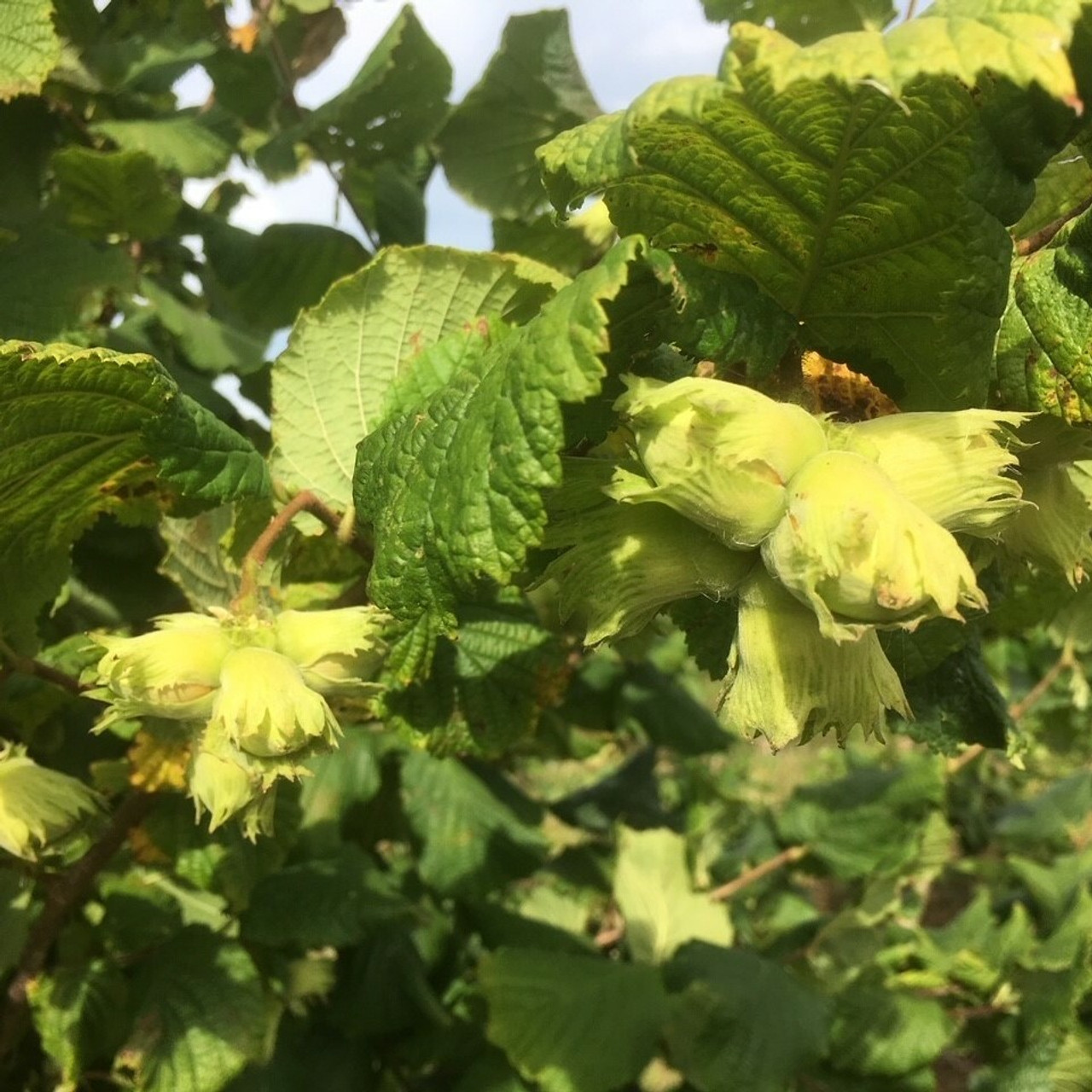
Cobnut
Hazelnuts is the 'catch-all' term used to describe both cobnuts and filberts. Cobnuts are actually the only truly native British nuts, as they are the fruit of Corylus avellana. They were one of the 30 odd species of tree which managed to hop onto the British Isles in the short period (relatively speaking!) between the end of the last Ice Age and Britain breaking away from the European continental land mass.
Cobnuts, like filberts, fruit best when grown in an open sunny site. They will tolerate some shade, but the crop may be slightly reduced. They are very tough and robust plants, which will grow on a wide range of soils, except for exceptionally thin sandy soils or heavy waterlogged clay. Both grow into large deciduous shrubs, reaching 5m or so if left unpruned, with heart-shaped foliage and conspuous yellow catkins produced in late winter/early spring.
Hazels are not self-fertile, so plant in groups of different cultivars to ensure good yields. They are wind-pollinated, so need to be planted reasonaly closely (say 4-5m apart) and plant in blocks rather than rows. If there is a common hazel in a nearby hedgerow, that will also help. Cobs will pollinate filberts, and vice-versa.
The fruit of a cobnut is generally more rounded than a filbert, and protrudes from the protective husk which encases the fruit. All hazels will ripen in September/October when the husk start to go brown and the nut will become loose. Pick as soon as you can, regularly shaking the tree and collecting fallen nuts, to avoid the attentions of grey squirrels! Dry nuts out to prevent them becoming mouldy by spreading in a single layer on a tray and leaving in a warm dry place for a few days. You can pick as early as August as 'green' hazelnuts, and these are lovely eaten fresh, a markedly different taste to any which are harvested later and dried.

